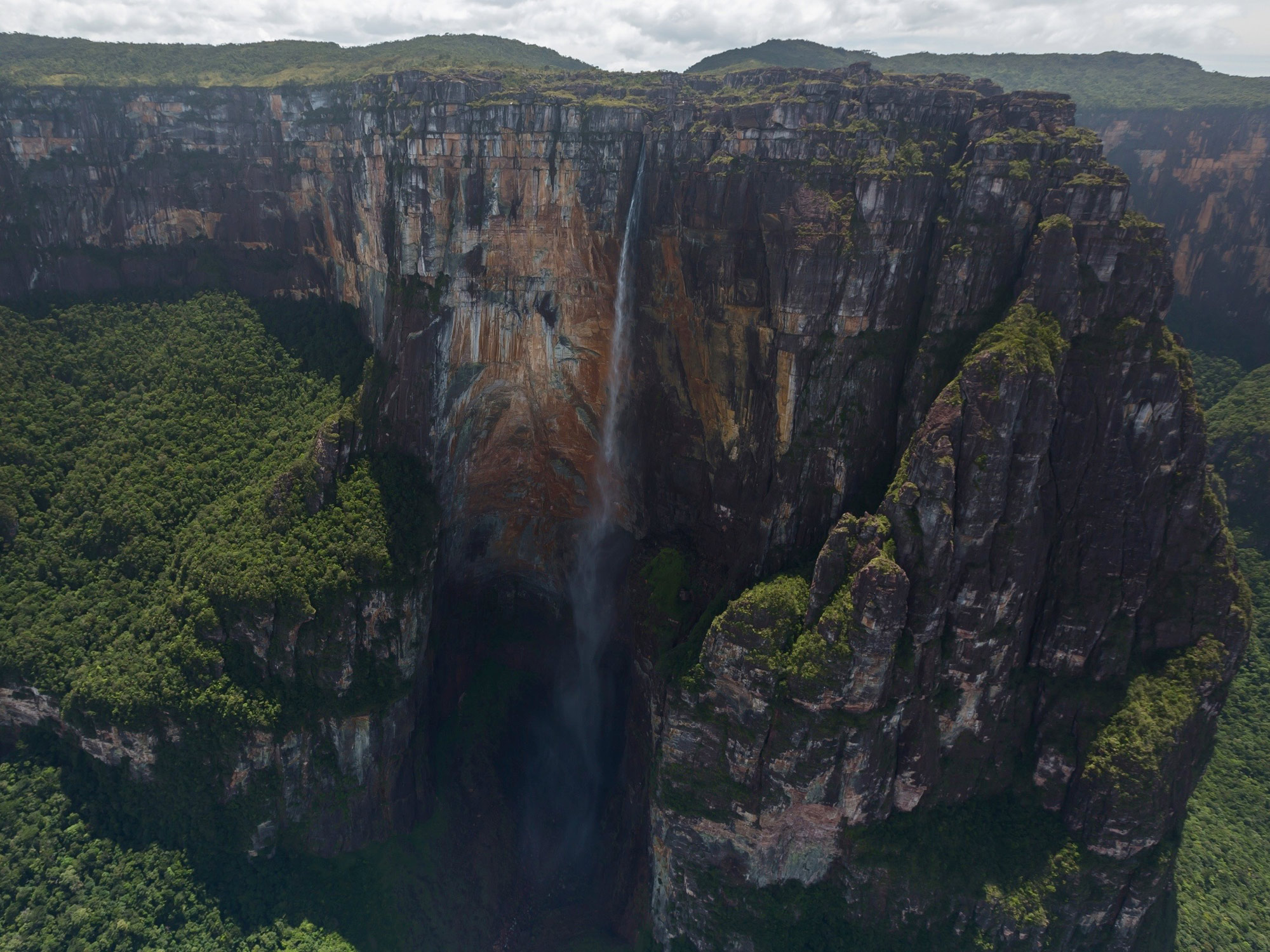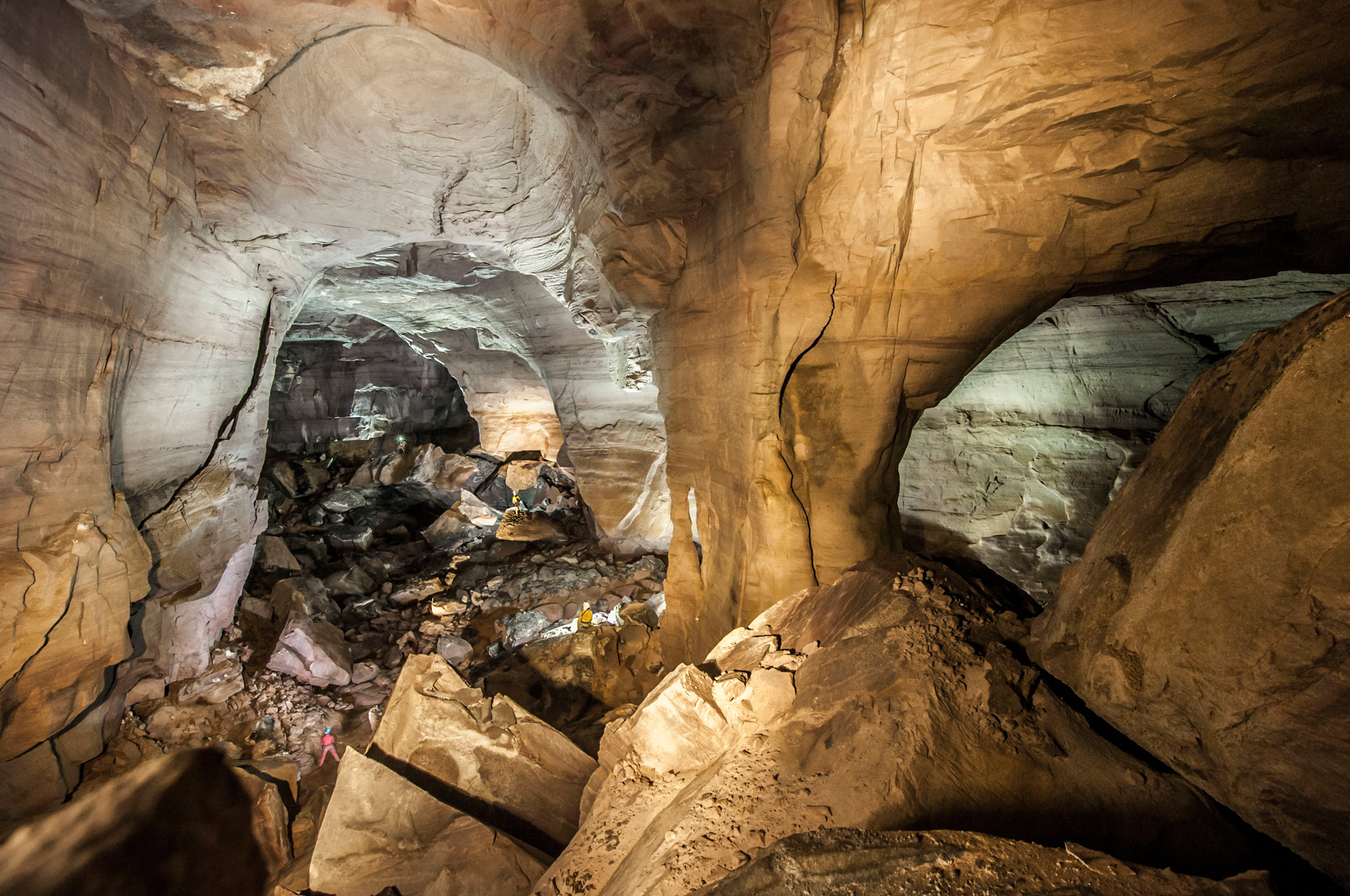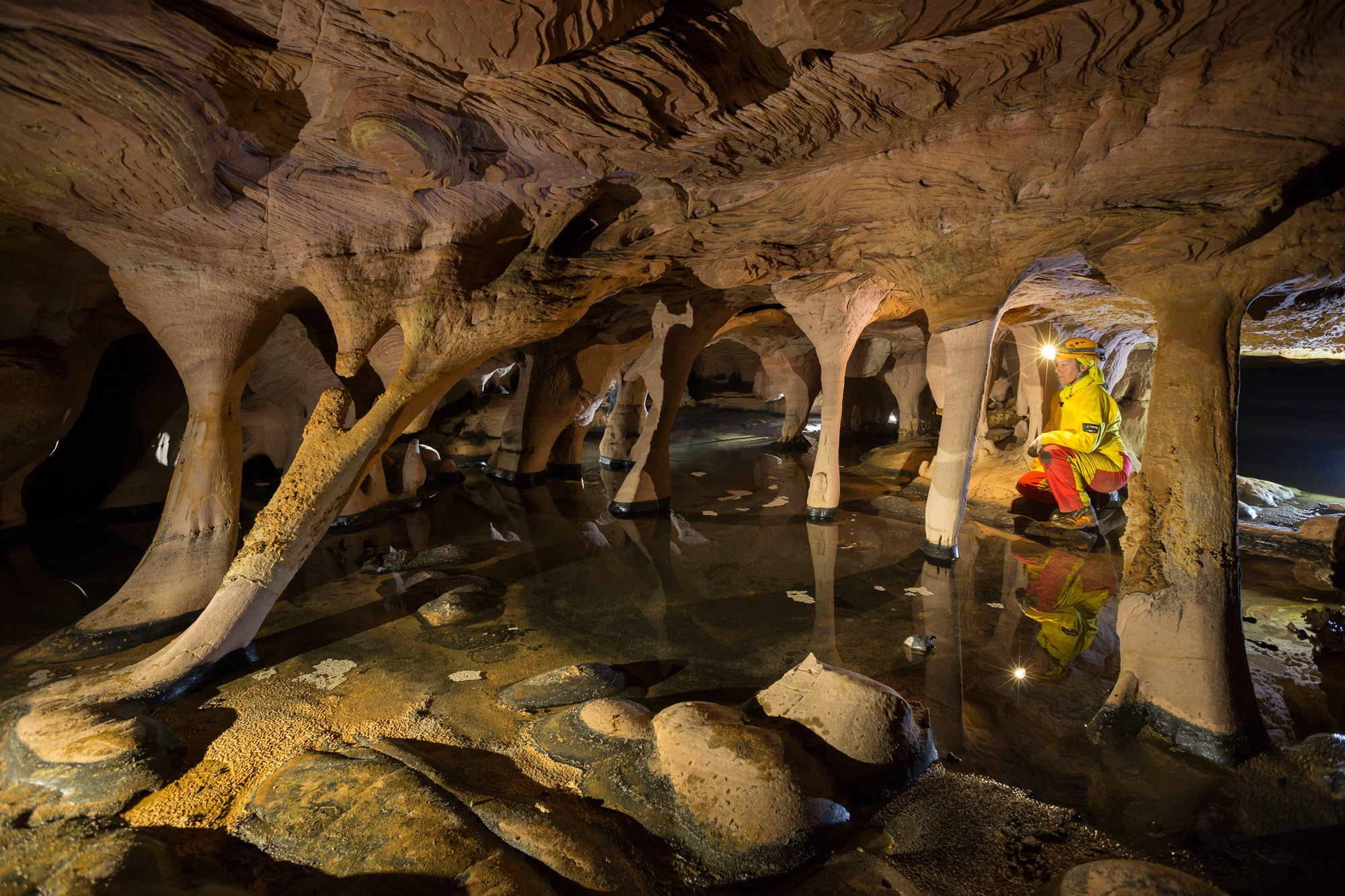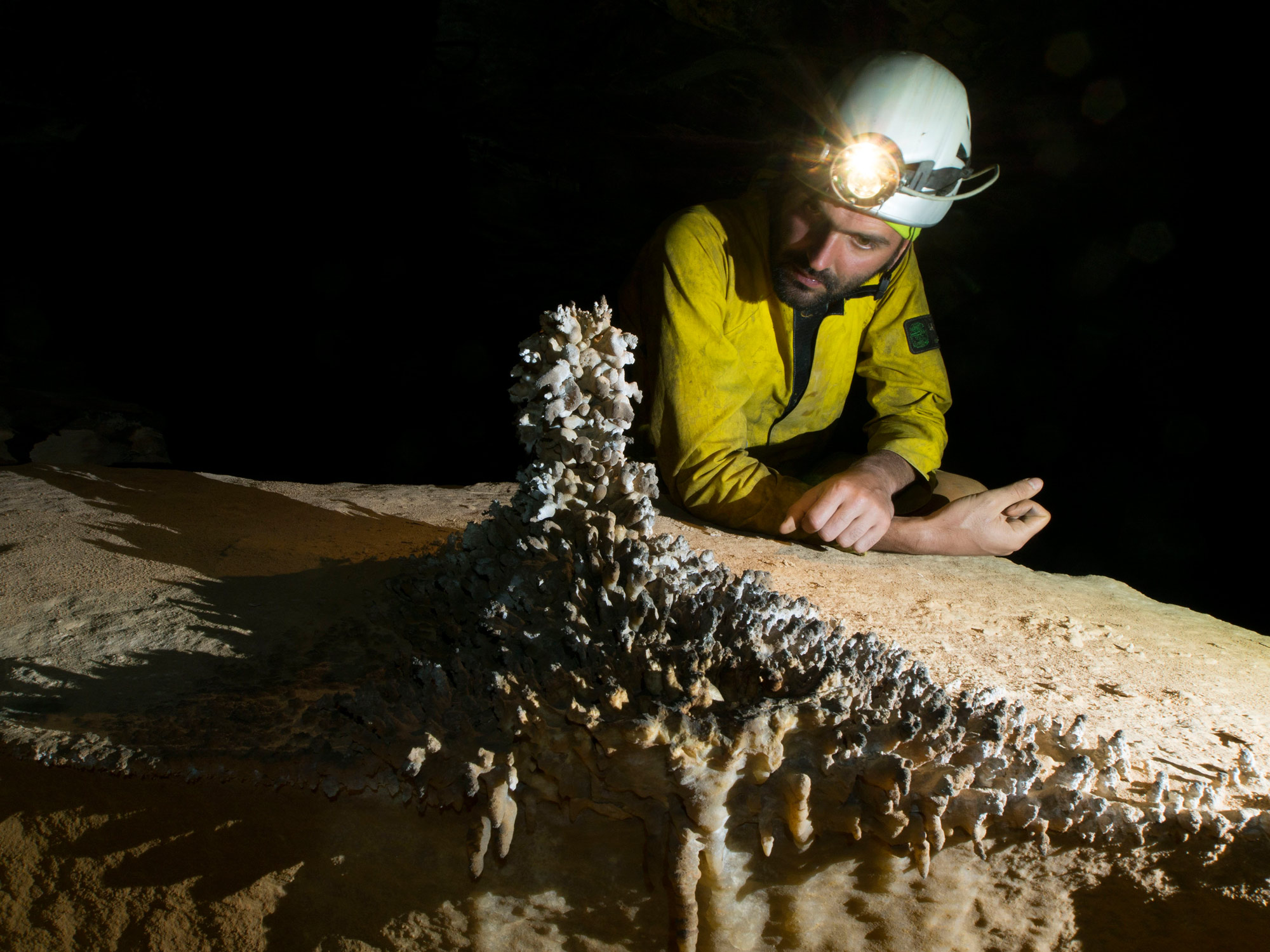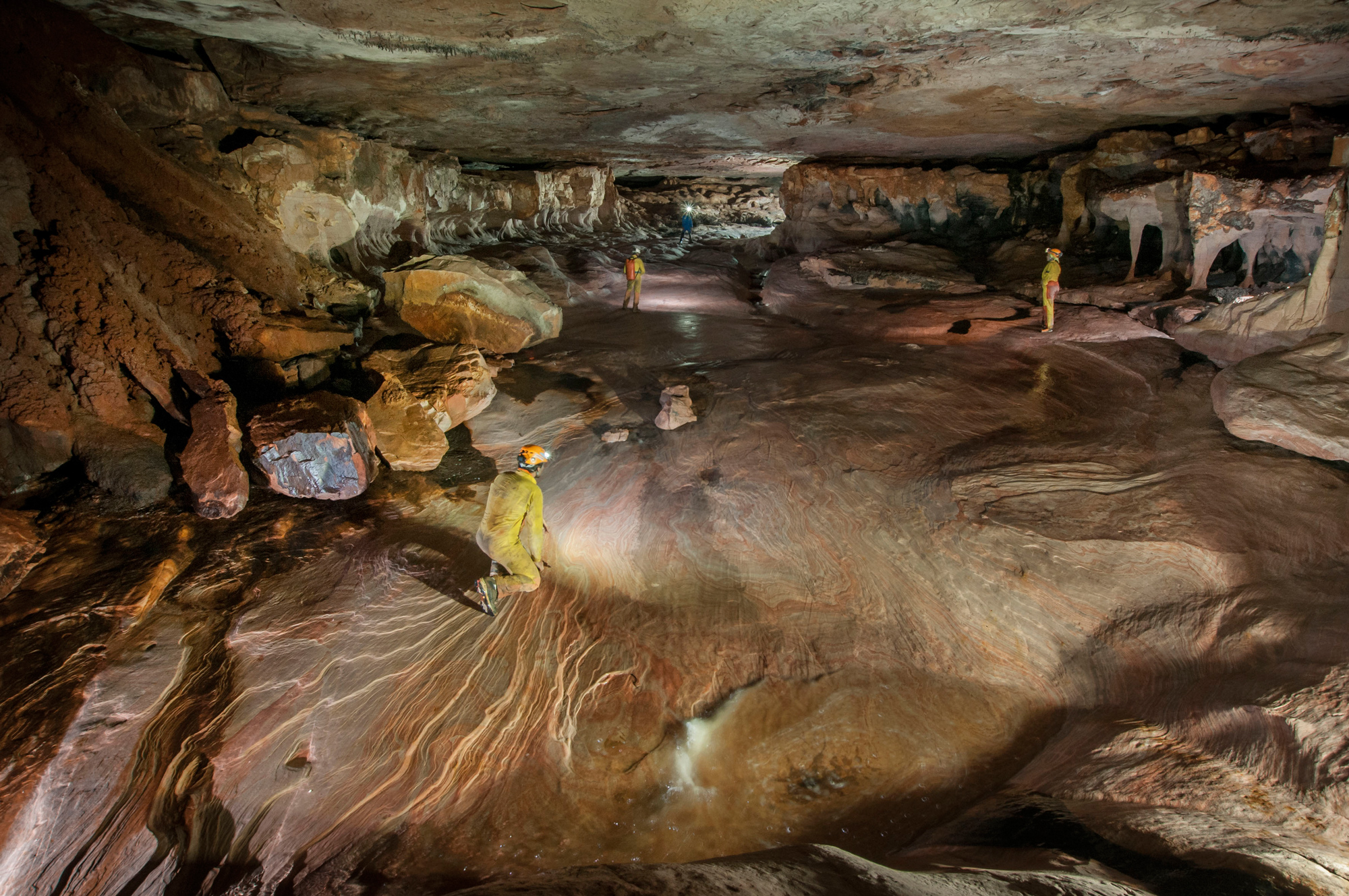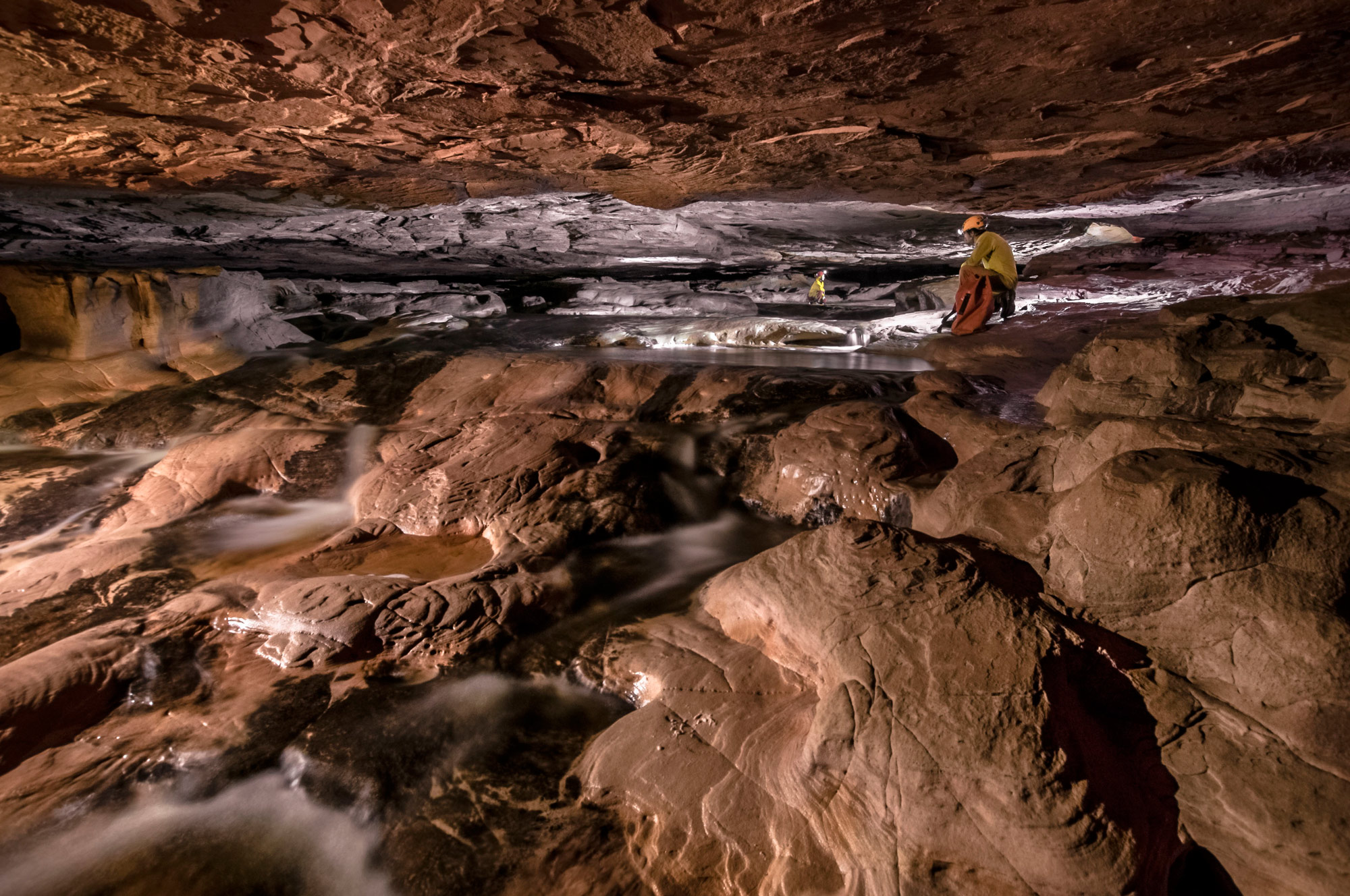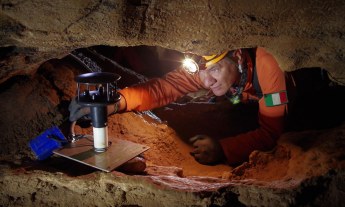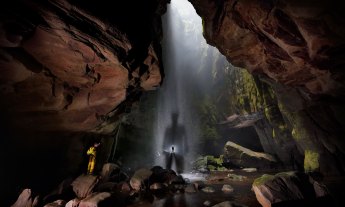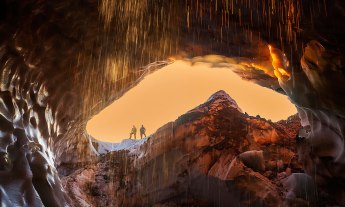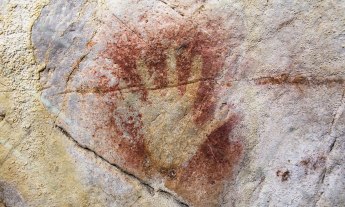Geologists don’t fully understand the process of erosion that created the unique system of caves in Venezuela’s Tepui mountains. These table-topped landmasses were formed out of quartzite, one of the hardest minerals in existence, and yet they contain a magnificent network of caves. That means they’re old. Very old. Cave explorer Francesco Sauro (TED Talk: Deep under the Earth’s surface, discovering beauty and science) figures they’ve been hundreds of millions of years in the making — and they’re quite likely the oldest caves we can explore on Earth. Sauro led one of the deepest expeditions into the cave system in 2014; here are a few images from his trip, which he describes as a leap back in time.
The inbound flight
Sauro first began identifying cave entrances atop the tepuis in 2010, but actually getting there was no small feat. The sheer cliffs can rise some 1,000 meters above the forest floor, and the flattened mountaintops are shrouded in clouds and pelted by torrential rains. “There are almost 4,000 millimeters of rainfall per year, so it’s really, really difficult to find good conditions,” Sauro says. After several aborted helicopter rides, Sauro’s crew caught a break in the weather and finally landed on the mountain’s plateau in March 2014. Photo: Riccardo De Luca/La Venta/Theraphosa.
The surprise that lies within
The team traversed roughly 20 kilometers of twisting passages underground. “There is no way to know what is behind a corner,” Sauro says. Satellite images and laser scanning offered hints of the cave system’s structure, but even a massive chamber like this one (note the tiny human figure in the foreground) can take explorers by surprise. Photo: Alessio Romeo/La Venta/Theraphosa.
The skeletal remains of Earth
Underground streams have lapped against the quartzite columns for millennia, but still they stand against the forces of erosion. They’re “like the skeleton of the rock,” Sauro says. “Just these columns alone can require tens of millions of years to be formed.” Photo: Riccardo De Luca/La Venta/Theraphosa.
Ancient etchings from an ancient life form
Stromatolites, one of the oldest microbial life forms on earth, sculpt strange, lumpen formations out of the rock. Scientists don’t know exactly why microbes form these kind of structures. One working theory: “to build shields,” says Sauro, shown here admiring one of the formations. “You have several tubular casts on the inside where the microbes live. It’s like a protection.” Photo: Francesco Lo Mastro/La Venta/Theraphosa.
An ancient, underground riverbed
“Usually when one thinks about caves one thinks of something small and very narrow,” Sauro says, “but you can have really spectacular landscapes.” This one, for instance, was created by an epic ceiling collapse: Explorers stand on the remnants of an ancient river that caused an entire stratum of rock to cave in on itself, exposing a flat expanse of ceiling overhead. Collapses on this scale can also create telltale sinkholes and gashes on the earth’s surface. Photo: Alessio Romeo/La Venta/Theraphosa.
The end of the cave
Some 20 kilometers into the cave system, Sauro reached this narrowing strata of the cave his team aptly named Flatlandia. “This is the farthest part of the cave,” Sauro says, “and was not explored completely.” How much farther the cave extends is anybody’s guess. Sauro’s estimate: several hundred kilometers. After all, geologists estimate that of the 30,000 kilometers traversed by cave explorers around the world, some tens of millions of kilometers remain undiscovered. “What you leave behind is still an unknown world,” Sauro says. Photo: Alessio Romeo/La Venta/Theraphosa.

